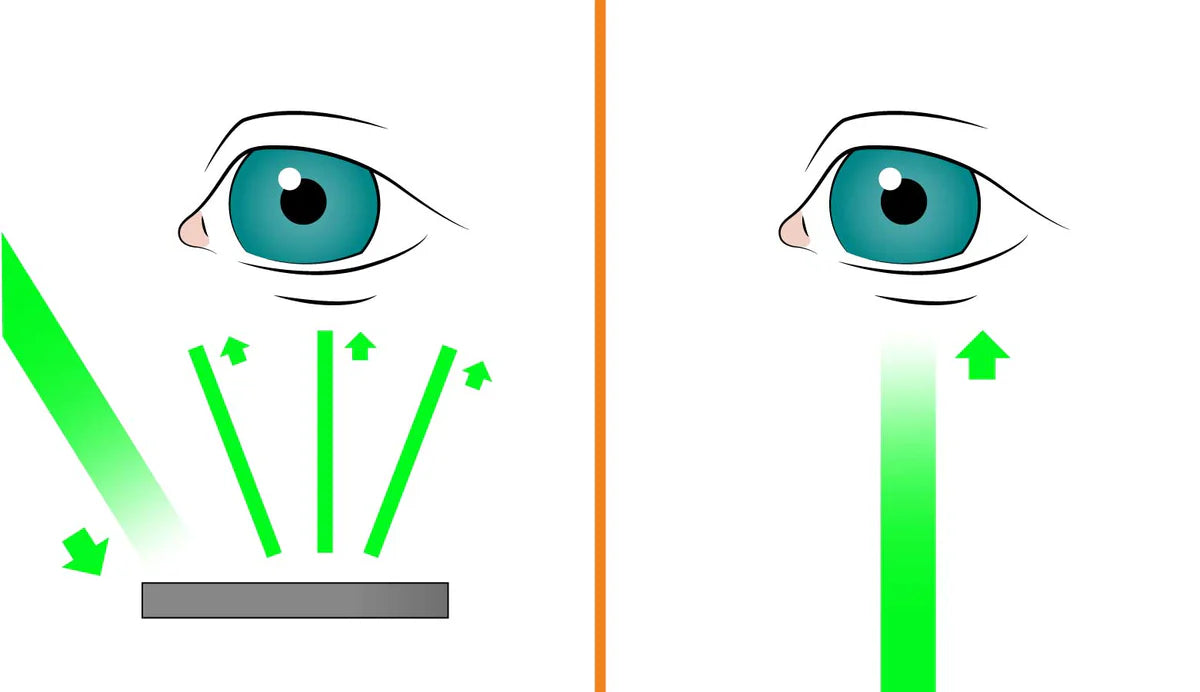When working with lasers, it's important to understand proper laser safety and the role that Personal Protective Equipment (PPE) plays in keeping yourself and those around you safe. Remember to wear your PPE and check with your laser safety officer before using a laser.
Depicted below are three different manners of laser viewing: direct, specular, and diffused viewing. Intentional direct viewing—or any type of direct viewing—is not safe. Other laser safety controls are designed to prevent direct viewing of lasers under any circumstances.

With direct or intrabream viewing, skin or eye is directly exposed to all or part of the laser. An incidental direct viewing has an assumed time exposure of 0.25s— the reflex time for the eye if hit with visible lasers. NEVER look directly at a laser.
If you are to do intentional direct viewing, an independent calculation (beyond the other appropriate calculations for MPE) needs to be done to factor in the expected time duration, and then resultantly determine the needed optical density (OD) to ensure you are below the Maximum Permissible Exposure (MPE). Often, professional labs have a higher threshold in comparison to the maximum permissible exposure, for instance a threshold of 20% of the MPE.
Specular viewing—which can be intrabeam/direct— comes from reflections off of smooth or mirrored surfaces, such as stainless-steel work surfaces, watch faces or jewelry. Specular viewing can be as dangerous as direct or intrabeam viewing.
Diffused viewing—or reflection— is the reflection of rough surfaces, such as a wooden table. This is typically the least dangerous type of viewing; however, it should be noted that for Class 4 lasers, diffused reflection can still cause fires. Do NOT get this close to a laser or its reflection from any surface (even with proper PPE). Diffused viewing can cause permanent biological harm.
For an unintentional direct hit, the maximum anticipated viewing duration for proper laser safety typically falls into one of three categories:


